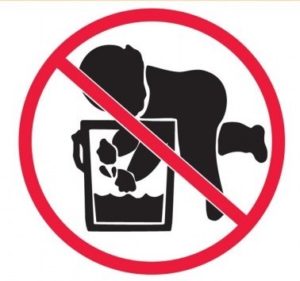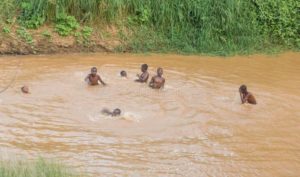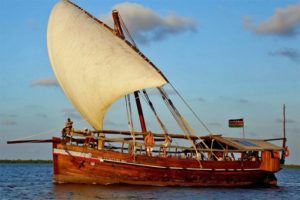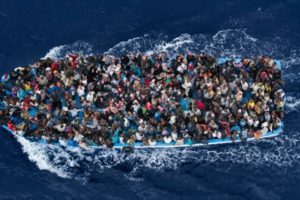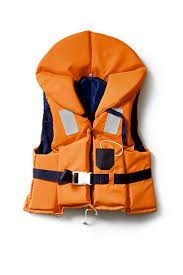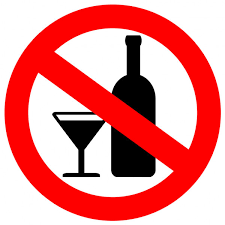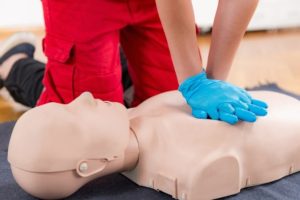According to the World Health Organization, drowning is the process of experiencing respiratory impairment from submersion/immersion in liquid and the outcome can be death, morbidity, and no morbidity. The risk of drowning is always with us whether at home, at work, traveling, or vacationing. According to WHO drowning is the 3rd leading cause of unintentional injury death worldwide, accounting for 7% of all injury-related deaths. The global burden and death from drowning are found in all economies and regions, with low- and middle-income countries accounting for over 90% of unintentional drowning deaths. Efforts to have more awareness of drowning led to World Drowning Prevention Day commemorated on 25th July every year through a declaration in April 2021 by General Assembly resolution A/RES/75/273.
World Health Organization (WHO) identifies the leading risk factors of drowning as age, gender, access to water, flood disasters, and traveling on water.
In Kenya, we have reports of people drowning in the Indian ocean, hotel swimming pools, rivers, lakes, man-made dams, wells, abandoned quarries, excavations in projects, and in the confines of our homes. Unfortunately, there is no data to guide policymakers in the establishment of policies. Toddlers are most vulnerable when it comes to drowning in the confines of our homes. Even in the absence of a swimming pool, a 20-litre bucket full of water has the potential to cause fatality.
Most Kenyans can relate to the story of growing up and only getting the opportunity to take swimming lessons in adulthood. Swimming is a life skill that most parents are not able to provide for their children. In Kenya, most of the government-sponsored primary schools lack swimming facilities, unlike privately-owned primary schools. It is however of importance to note that some Kenyan public secondary schools, colleges, and universities do have swimming pools. Communal swimming pools are a preserve for the rich in the affluent neighborhoods or private club members. Therefore, you will find most of the middle- and low-income earners will opt to go swimming in established hotels and resorts. In rural Kenya rivers, lakes, dams, and abandoned quarries will do for most children some end up in tragedy. Some of the self-trained divers have mastered their skills and are contacted by the community to help retrieve the bodies of people who have drowned. But due to a lack of adequate rescue equipment, some of the rescuers end up drowning.
Photo courtesy: Dreams time
Apart from the leisure aspect most people around the world use various modes of transportation over water bodies including cruise ships, racing boats, off-road riding boats, windsurfer boats, riverboats, jet skis, battleships, raft boats, canoes, ferries, and yachts.
Ferry crossing the Likoni Channel
Photo courtesy: Business daily Africa
Dhow in Lamu
Photo Courtesy: East African Retreats
As echoed by WHO through the Global Report on Drowning; Preventing a leading Killer 2014 drowning is a public health concern responsible for 372,000 deaths per year.
28th February 2021-Three children drown in a dam in Narok
20th March 2021-Five die in Lake Victoria
1st May 2021-A woman drowns in a river in Kilgoris
3rd May 2021-Two drown in Masinga Dam Machakos county after vessel capsizes
18th May 2021-Three children drowned in a quarry in Turkana County
31st May 2021-Two deaths at Gazi Beach
6th September 2021-University student drowned in a swimming pool in Kwale county
20th August 2021-Three died in a well in Kapenguria West Pokot
A summary of accidents as reported in Kenya’s local dailies in 2021 (The list is not exhaustive and highlights a few of the accidents to demonstrate the severity of death by drowning).
1st June 2015-The eastern passenger cruise ship out of the 456 only 14 survived in china
16th April 2014-Sewol ferry sinks off the coast of South Korea killing 304 people
29th April 1994 Mtongwe Ferry capsizes in Kenya killing 272 people
15th April 1912-Titanic Ship sinks killing more than1500 people
A summary of cruise and ferry accidents as reported in digital media (The list is not exhaustive and highlights a few of the accidents to demonstrate the severity of death by drowning).
Illegal migrants have also lost their lives in the attempt to cross the Mediterranean Sea by use of inflatable boats with no safety precautions in place such as the life jackets.
Photo Courtesy: Massimo Sestini/AP
Drowning has also occurred in offshore work stations, in 6th October 2020 two workers lost their lives when their boat capsized in the Indian ocean. OSHA 2007 and its subsidiary legislations outline the statutory requirements that an employer must meet as a minimum to ensure the safety and health of the worker are safeguarded. The employer can go above the statutory requirements by adopting industry best practices. Among the occupiers, duties outlined in OSHA 2007 the occupier is required to provide information, instruction, training, and supervision(IITS) as is necessary to ensure the safety and health at work of every person employed as well as undertake appropriate risk assessments in relation to the safety and health of persons employed and, on the basis of these results, adopt preventive and protective measures to ensure that under all conditions of their intended use, all chemicals, machinery, equipment, tools, and process under the control of the occupier are safe and without risk to health and comply with the requirements of safety and health provisions in this Act.
Loss of life can alter one’s outlook on life, especially for the immediate family. Inability to cope may result in depression and suicide for some of the affected persons. Litigation in a court of law is time-consuming, mentally and physically draining and where a business is involved bad reputation may impact the business negatively by reduced profits or running out of business. A look at the archives in Kenya Law Review will give an insight into the court cases that have been finalized.
Below are some of the measures to be taken to prevent drowning across all sectors:
- Avoid storage of water in buckets in the presence of toddlers
- Ensure water storage tanks, especially underground are lockable, take caution to always lock with a padlock after use
- Man-made dams, fish ponds, and swimming pools should have an enclosure to prevent entry and accidental falls of children and toddlers
- Ensure the life jacket worn is the right size, in good condition, and all straps and zippers are fastened
- If you are a beginner, always ask where the shallow and deep end is, there is no shame when it comes to your safety
- Do not approach water bodies when intoxicated
- Quarries and burrow pits must be refilled once their use is completed.
- An emergency preparedness plan should be tested from time to time
- Hiring of competent life guards to ensure prompt rescue
- Always consider the weather especially when making excursions in the oceans and lakes
- Invest in life saving skill by undertaking swimming lessons and first aid classes

